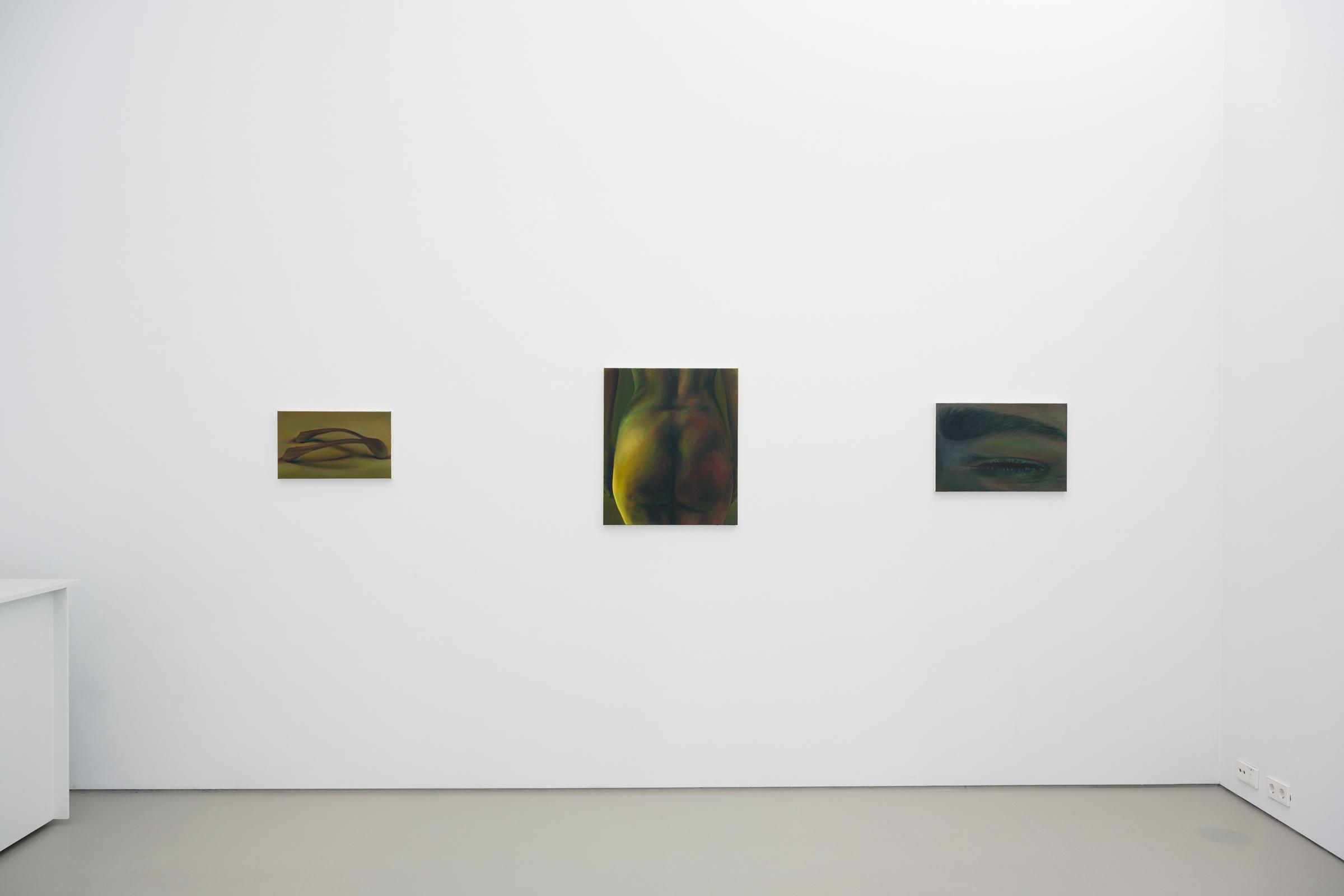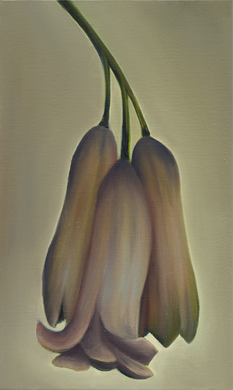Ina Stephanita: she looks at the world in amazement, as a child of no more than two. Round face, open mouth and eyes to drown in. This is a small painting, a self-portrait, which the now forty-nine-year-old Ina van Zyl painted forty-seven years later. In Among Others it hangs along with portraits of friends and family. As though the little Van Zyl is looking at her future: at her grown-up sister, at girlfriends Yvonne and Muriel, her colleague Natasja and the contemplative Anton. Hanging among the portraits are still lifes. A flower about to blossom, a nearly limp male organ, a wishbone, three pills in a row... Beautiful, day-to-day and trivial images painted in a precise and modest manner. This is Among Others. This is Ina van Zyl's world.
The work of Van Zyl has always been personal. But how personal can you get? How do you navigate between sentiment and abstraction? Between emotion and isolation. And between yourself and the world around you. The Dutch poet Alfred Schaffer posed these questions in his lecture Op de rug gezien. They touch on the essence of an artist's life and inspired Van Zyl to produce the works in Among Others. In the literal sense: among those who formed her as a person and an artist. But also in the sense of 'there is more'. The images are details from a whole, a wider world where everything coexists. And on all of this light is cast.
As she paints Van Zyl transports that entire world to a different reality. Without losing sight of her subject, she distances herself from it. Across the face of little Ina lies a greenish yellow haze. Looming up behind Anton is a warm glow, concentrated in a subtle but sharply luminous contour. And whoever Anton is, the painted version of him is fascinating: his gaze directed both inwardly and outwardly, the reddish glow echoed in his lips. And the purple, green, blue and orange – to name just a few of the colors Van Zyl uses to create his face – are suspenseful and compelling in their alienating effect. While he may be unmistakably Anton, to Van Zyl he is now a painting.
The countless interconnections in the exhibition allow us to experience new meaning, in and among the works. The image of a wishbone, for instance, is called For Walter Meyer and is thereby an ode to, and thus a kind of portrait of, the South African painter who was important to Van Zyl. At the same time this Adriaen Coorte-like still life brings to mind childhood, a time when a wish could still evoke so much hope and imagination. That hope which is reflected in the wide-open eyes of Ina Stephanita and even in the closed eyes of the young Matthew dreaming in his sleep.
U-turn, here a fitting and humorous title for a half-drooping male organ, relates to the barely budding lilies in Hang in There that resignedly succumb to their own palpable weight. The light, which seems to emerge from the canvas itself, is sublime and elusive. It can be seen again in the bright eyes of Yvonne, in the contours of My Ass, in the bleached hair of the slyly eyeing Pharrell (in which Pharrell Williams can easily be recognized). And Still Life with Chemicals exudes light that gives the pills an unreal quality.
"I live and love in and by way of poetry," Schaffer quotes the South African poet Antjie Krog. "All of life must therefore be captured in poetry. You insult poetry if you think that it offers no room for the banal. You impoverish human experience by silencing half of it." This must be more or less the case in painting as well. At least in the work of Ina van Zyl.
- Esther Darley, Translation: Beth O’Brien

